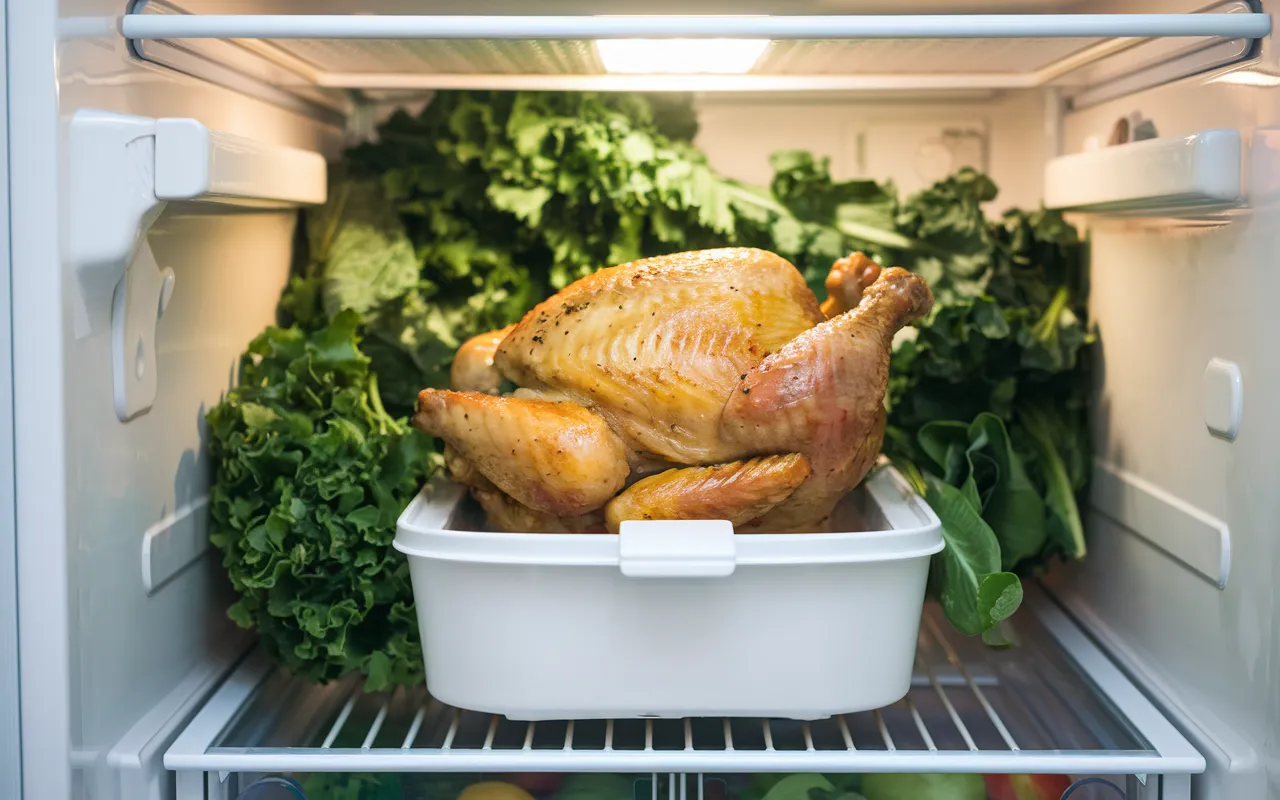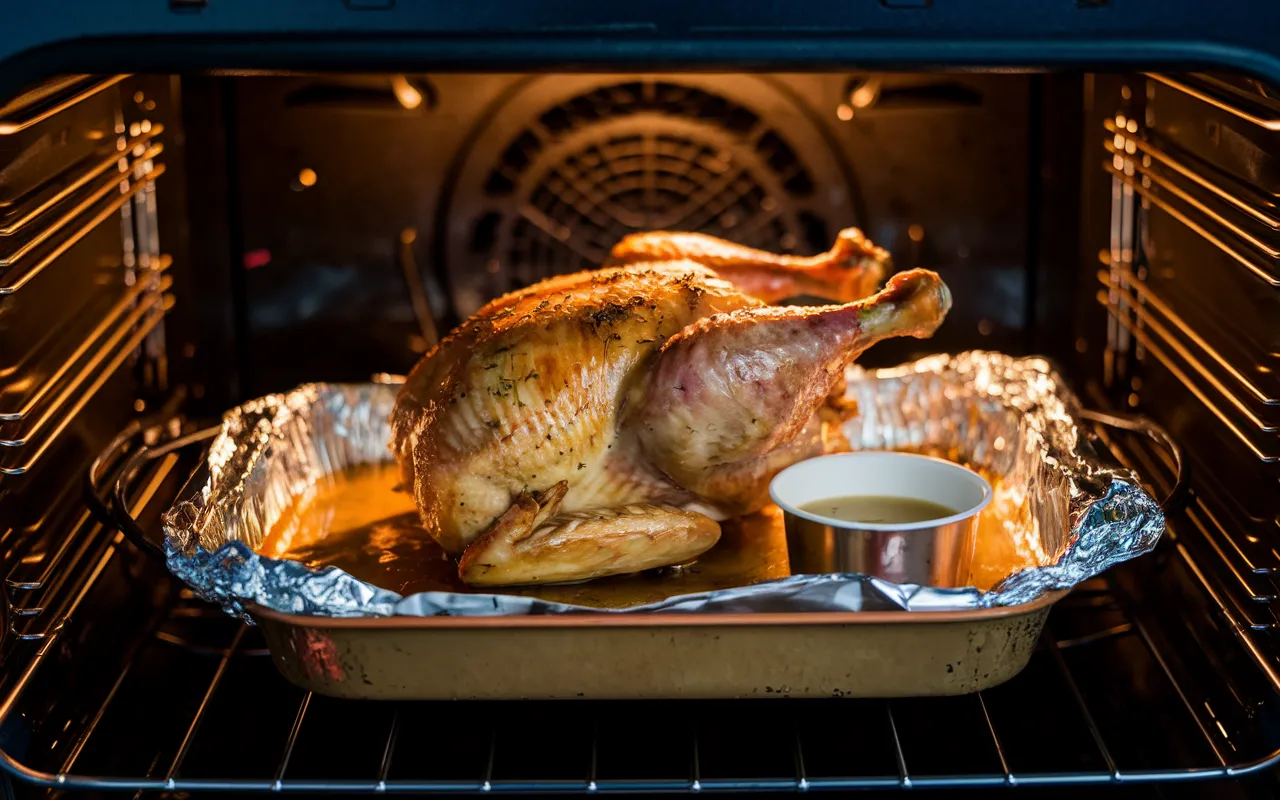Leftover rotisserie chicken can be a lifesaver for quick meals, but its notorious tendency to dry out often leaves home cooks scratching their heads. Retaining the moisture and flavor of this golden, roasted favorite is both a science and an art. In this comprehensive guide, we’ll explore step-by-step methods to store, reheat, and even repurpose your leftover rotisserie chicken into mouthwatering dishes. Let’s ensure that every bite remains succulent and satisfying!
Understanding the Challenge of Keeping Leftover Rotisserie Chicken Moist
The Appeal of Rotisserie Chicken
Rotisserie chicken has become a staple in many households, thanks to its convenient preparation and rich flavor. Whether you grab one on the way home from work or make it a weekend treat, its versatility is unmatched. However, when reheated or improperly stored, even the juiciest chicken can become tough and dry. This common pitfall often leads to disappointing meals, but don’t worry—there are practical solutions ahead.
Importance of Moisture Retention
Keeping your chicken moist isn’t just about preserving its texture; it’s about retaining its flavor and nutritional value. When chicken dries out, not only does it lose its tenderness, but it can also become unappetizing and difficult to chew. By mastering proper storage and reheating techniques, you can unlock the potential of your leftovers and even reduce food waste, a win-win!
Stay tuned as we dive into essential methods to ensure your leftover rotisserie chicken remains as delightful as when it first came out of the oven. Whether it’s through smart storage, moisture-retaining reheating methods, or creative recipes, this guide will have you covered!
Proper Storage Techniques
Storing Leftover Rotisserie Chicken Correctly
To keep your leftover rotisserie chicken as moist and flavorful as possible, proper storage is key. By taking swift, smart actions, you’ll ensure your chicken stays safe and appetizing for days to come.
Immediate Actions Post-Purchase
The moment you’re done enjoying your rotisserie chicken, it’s time to think about preserving the leftovers. Prompt refrigeration is essential—don’t leave the chicken at room temperature for more than two hours. This is the so-called “danger zone” where bacteria thrive, leading to spoilage. Wrap the chicken tightly or place it in an airtight container immediately to lock in moisture.
Packaging Methods
Packaging plays a critical role in preventing dryness. Opt for airtight containers or plastic wrap that clings closely to the chicken’s surface. For longer preservation, vacuum sealing is a game-changer. It removes excess air, which prevents freezer burn and keeps your chicken fresher for extended periods.
Refrigeration vs. Freezing
Refrigeration is ideal if you plan to use your leftovers within three to four days. Ensure the chicken is stored in the coldest part of your fridge to maintain its quality. However, if you’re looking to store it for longer, freezing is your best bet. Proper freezing techniques, like slicing the chicken into portions before freezing, make thawing quicker and prevent drying out. Label your containers with dates to keep track of freshness.
Reheating Methods to Retain Moisture
Effective Reheating Techniques for Moist Chicken
Reheating leftover rotisserie chicken can be tricky, as improper methods often leave it dry and rubbery. Here are foolproof ways to restore moisture and retain its original juicy goodness.
Oven Reheating
The oven is one of the best tools for reheating rotisserie chicken while keeping it moist. Preheat it to 350°F and place the chicken in a baking dish. Add a splash of broth or water, then cover tightly with aluminum foil. This creates a steamy environment that prevents the chicken from drying out. Heat for about 20 minutes or until warmed through.
Microwave Reheating
While quick and convenient, microwaves can easily zap the moisture out of chicken if not used correctly. Use a medium power setting to avoid overcooking. Place the chicken on a microwave-safe plate, add a small cup of water or cover with a damp paper towel to create steam. This traps moisture and keeps the chicken juicy.
Stovetop Reheating
The stovetop is a versatile option for reheating chicken pieces. Add a bit of liquid like broth or water to the pan, and gently sauté the chicken on low heat. Cover the pan with a lid to trap steam, allowing the chicken to reabsorb moisture without burning.
Sous Vide Method
If you’re a fan of precision, the sous vide method is unmatched for reheating rotisserie chicken. Place vacuum-sealed chicken in a water bath heated to around 140°F. This gentle, consistent heat ensures even reheating without drying out the meat. Plus, vacuum sealing locks in the juices, making it a foolproof technique for restoring your leftovers.
Moisture-Enhancing Cooking Techniques
Cooking Methods to Rehydrate Leftover Chicken
Rehydrating leftover rotisserie chicken doesn’t just make it edible—it elevates it to deliciousness! Cooking methods that incorporate moisture will breathe new life into dry chicken, turning leftovers into culinary masterpieces.
Incorporating into Soups and Stews
Soups and stews are a fantastic way to rehydrate chicken while amplifying its flavor. The liquid base—whether broth, stock, or even coconut milk—immerses the chicken, allowing it to soak up moisture. This method not only restores the texture but also infuses the chicken with the rich, savory flavors of the dish.
Chicken noodle soup, creamy chicken chowder, or hearty vegetable stew are perfect examples where leftover chicken shines. The slow cooking process ensures tender, juicy bites of chicken every time.
Using Sauces and Gravies
A luscious sauce or gravy can work wonders for dry chicken. Creamy sauces made with ingredients like yogurt, sour cream, or heavy cream help coat the chicken with moisture. On the other hand, broth-based sauces add a light, savory touch while keeping the calories lower.
When applying sauces, ensure the chicken is fully submerged during cooking or reheating. This technique prevents further dryness and helps every piece absorb the flavors, making the dish irresistible.
Slow Cooker and Pressure Cooker Uses
For a set-it-and-forget-it approach, slow cookers and pressure cookers are invaluable tools. In a slow cooker, keep the temperature low and add a generous amount of liquid—broth, tomato sauce, or even water—to create a moist cooking environment. Let the chicken simmer gently over a few hours to rehydrate fully.
Pressure cookers, with their high-pressure steam, are equally effective. This method works quickly, locking in the juices while softening any tough chicken pieces. Just ensure you don’t overcook, as too much time under pressure can undo the benefits.
Flavor Infusion Strategies
Enhancing Flavor While Retaining Moisture
Flavor and moisture often go hand in hand. Infusing your leftover chicken with bold tastes not only revives its appeal but also complements the methods used to keep it juicy.
Marinating Leftover Chicken
Marinades are a versatile way to both tenderize and flavor chicken. Acidic marinades, featuring ingredients like lemon juice, vinegar, or buttermilk, work wonders to soften the meat. Meanwhile, oil-based marinades with herbs and spices help lock in moisture.
For optimal results, marinate the chicken for at least 30 minutes. Overnight marination in the fridge allows the flavors to penetrate deeply, transforming even the driest pieces into delectable bites.
Seasoning Techniques
Dry rubs and spice blends can elevate the flavor profile of your chicken without compromising its moisture. A mix of paprika, garlic powder, and black pepper, for instance, forms a flavorful crust when cooked.
Herbs like rosemary, thyme, and parsley are also excellent choices. Combine them with a drizzle of olive oil or a splash of lemon juice for a herbaceous, moist finish. Whether baked, sautéed, or grilled, these techniques enhance both taste and texture seamlessly.
Creative Recipe Ideas
Dishes That Keep Leftover Chicken Moist
Transforming leftover rotisserie chicken into delightful new dishes is a surefire way to avoid dryness while exploring creative culinary options. From fresh salads to hearty casseroles, the possibilities are endless.
Chicken Salad Variations
Chicken salads are a classic and easy way to repurpose leftover rotisserie chicken. Using Greek yogurt instead of mayonnaise not only adds a creamy texture but also keeps the chicken moist and light. Toss in chopped celery, red onions, and fresh herbs like dill or parsley for a refreshing crunch. Add grapes or dried cranberries for a touch of sweetness, and serve on a bed of greens or between slices of multigrain bread.
For an exotic twist, try a curried chicken salad with a touch of coconut milk, curry powder, and golden raisins. The blend of spices and yogurt ensures a flavorful, juicy bite every time.
Casseroles and Bakes
Casseroles are perfect for keeping chicken moist due to their layered structure and reliance on creamy sauces. Combine shredded chicken with cooked pasta, vegetables like broccoli or peas, and a rich béchamel or cheese sauce. Bake until bubbling, and watch as the chicken absorbs the creamy goodness.
Shepherd’s pie is another excellent option. Replace ground meat with leftover chicken, layer it with gravy, and top it off with mashed potatoes. The chicken stays moist beneath the rich toppings, creating a hearty, satisfying meal.
Tacos and Wraps
Tacos and wraps are versatile, quick to assemble, and naturally moisture-friendly. Combine shredded chicken with ingredients like guacamole, salsa, or sour cream to ensure every bite is juicy. Add lettuce, shredded cheese, and a squeeze of lime for a balanced flavor profile.
For a Mediterranean-inspired wrap, pair the chicken with hummus, cucumbers, and a drizzle of tzatziki sauce. The creamy components ensure the chicken remains succulent while adding a burst of flavor.
Preventing Dryness in Future Rotisserie Chicken Purchases
Selecting and Handling Store-Bought Rotisserie Chicken
Preventing dryness starts with choosing the right rotisserie chicken at the store and handling it correctly once you bring it home. A few simple steps can make all the difference in the chicken’s quality.
Choosing the Right Chicken
When selecting a rotisserie chicken, freshness is key. Look for a bird with a glossy, golden-brown skin and no signs of drying out or shriveling. Avoid chickens that appear overcooked or have dark, charred spots, as these may indicate dryness.
Check the packaging date or ask the store staff about when the chicken was prepared. The fresher the chicken, the juicier and more flavorful it will be.
Timing Your Purchase
Timing is everything when it comes to rotisserie chicken. If possible, aim to buy it during peak hours when fresh batches are likely to be released. Late afternoon or early evening is often a good bet at many stores. Once purchased, keep the chicken warm if you plan to serve it immediately or transfer it to an airtight container for later use. By minimizing exposure to air and reheating carefully, you’ll preserve its natural juices and tenderness.
Frequently Asked Questions
FAQs on Keeping Leftover Rotisserie Chicken Moist
Addressing common concerns about leftover rotisserie chicken ensures not only better taste but also safe consumption. Here are answers to frequently asked questions.
How long can I store leftover rotisserie chicken?
Refrigerated leftover rotisserie chicken should be consumed within 3 to 4 days to maintain its quality and safety. Store it in an airtight container and place it in the coldest part of your refrigerator. For longer storage, freezing is an excellent option. When properly frozen in vacuum-sealed bags or airtight containers, rotisserie chicken can last up to 3 months without losing moisture.
Can I reheat rotisserie chicken multiple times?
It’s generally safe to reheat rotisserie chicken more than once, but it’s not recommended. Each time you reheat, the chicken loses more moisture, increasing the risk of dryness and a less appetizing texture. Additionally, repeated reheating may lead to bacterial growth if not handled carefully. Always reheat only the portion you plan to eat.
What are the signs of spoiled chicken?
Spoiled chicken often has a slimy texture, gray or greenish discoloration, and an unpleasant odor. If you notice any of these signs, do not consume the chicken. Always err on the side of caution when it comes to food safety, especially with poultry.
Is it safe to eat cold rotisserie chicken?
Yes, cold rotisserie chicken is safe to eat as long as it has been stored properly and is within its storage life. Cold chicken is a great option for salads, sandwiches, and wraps. Ensure it hasn’t been left out at room temperature for more than two hours.
Can I use leftover rotisserie chicken in cold dishes?
Absolutely! Leftover chicken works wonderfully in cold dishes like chicken salads, wraps, and pasta salads. Just make sure to use a dressing or sauce that keeps the chicken moist and enhances its flavor.
How can I add flavor to leftover rotisserie chicken?
Adding flavor is easy with simple techniques. Toss the chicken with a spice blend or a dry rub for an extra kick. For more intense flavor, marinate the chicken for a few hours in a mixture of olive oil, lemon juice, garlic, and herbs. This not only adds zest but also helps rehydrate the meat.
Conclusion
Ensuring Moist and Flavorful Leftover Rotisserie Chicken
Recap of Key Strategies
Keeping your leftover rotisserie chicken moist boils down to three key strategies: proper storage, effective reheating, and creative repurposing. Use airtight containers or vacuum sealing to maintain freshness. Reheat gently with added liquids like broth or water to prevent dryness. Lastly, transform leftovers into delicious dishes like soups, casseroles, or wraps to make the most of your chicken.
Encouragement to Experiment
Don’t be afraid to get creative with your leftovers! Whether it’s trying new marinades, experimenting with spice blends, or incorporating the chicken into bold new recipes, the possibilities are endless. With these tips in hand, your rotisserie chicken leftovers will never be dull or dry again.


